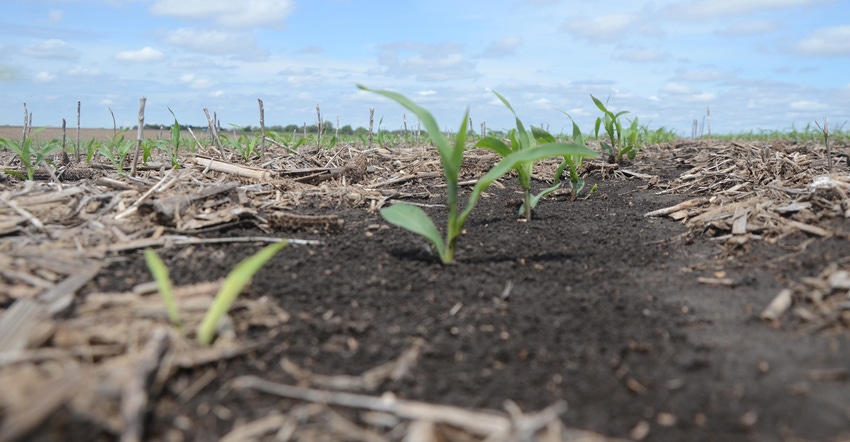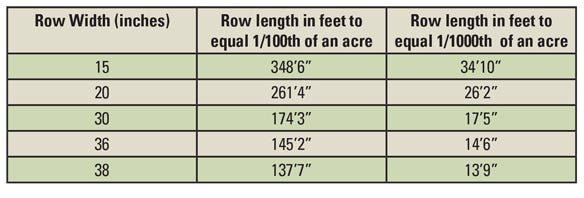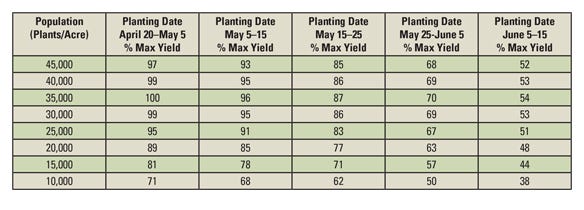May 14, 2019

By Roger Elmore, Jenny Rees and Robert Klein
According to a recent USDA-NASS report, 35% of Nebraska's corn had been planted as of May 5, similar to 38% last year but behind the five-year average of 47%. Emergence was at 2%, similar to last year but behind the 9% average.
The April 26 report indicated 16% of corn had been planted compared with 15% last year, and 23% for the five-year average.
Corn already planted has no doubt been subjected to cool soil temperatures. Corn planted into soil with temperatures below 50 degrees F may experience difficulties or fail to emerge.
Here's a list, revised from articles written by Lori Abendroth and Roger Elmore, highlighting a few things to consider as seedlings emerge from cool or wet soils.
1. Wait five to seven days after emergence begins, then determine the plant population.
• Dig in the gaps to check the status of "missing" plants.
• Calculate the plant population in several "random" areas in the affected part of the field to help estimate the existing population.
• Don't be tempted to go to the worst area and start counting there, ignoring the better parts of the affected area. The idea is to characterize the field as best you can. Scout in a zigzag pattern across the field to best represent its overall condition.
• To estimate surviving plant stands, count plants in at least three areas in affected fields. Increase your accuracy by counting plants in 1/100 of an acre in contrast to only those in 1/1,000 of an acre — the more, the better. We recognize that taking 10 1/1,000 of an acre samples in random areas is easier and likely will provide better information than one 1/100 of an acre sample. Use the table below to determine the length of row necessary to achieve either a 1/100 or a 1/1,000 of an acre sample. Multiply by either 100 or 1,000 (depending on which area you counted) to determine the number of live plants per acre.

• Determine whether the seedlings you counted will survive. Were there plants included in the count that appear to be damaged because of insects, disease, frost, hail, flooding, soil crusting or other factors? Estimate whether severely injured plants will survive by checking the growing point and recovery. If the growing point is discolored and soft, the plant won't survive. If it is firm and new green growth is emerging from it, it will most likely survive. With recent rain and flooding, you may need to wait a few days to a week to determine subsequent recovery.
• Consider plant stand uniformity (if there is uneven emergence). If uneven emergence is row to row — that is, most rows are emerged but some are not — replanting will likely not significantly increase yield.
• If the delay in emergence is less than two weeks between the early- and late-emerging plants, replanting may increase yields, but by only 5% or less. Replanting likely would not be economical. However, if one-half or more of the plants in the stand emerge three weeks later than the initial plant emergence, replanting may increase yields by about 10%.

2. Calculate expected yield from existing stand using the table above.
• The table above summarizes planting date and plant population (final stand) relationships. For example, if the original planting date was April 30, a population of 35,000 plants per acre is expected to provide maximum yield, based on the table. If the population is only 20,000 plants per acre, yield potential is 89% of the maximum for the April 30 planting date.
• If several 4- to 6-foot gaps occur within the row, yields will be reduced an additional 5% compared with a uniform stand. Stand gaps of 16 to 33 inches only will reduce yield by 2%.
• Estimate replant yield with the table above. Use planting date and target plant population to estimate the yield potential of the replanted field. Replanting on May 20 at 35,000 plants per acre will result in about 87% of the maximum yield. Compare the replanted crop with the original crop that was planted April 30 and now has a population of 20,000 plants per acre and consider the costs of replanting. Expected yields are 89% for retaining the old stand versus 87% for a replant. Remember, however, there is no guarantee of getting a good stand with replanting. Insect and disease pressure may be greater in replanted fields.
• Remember planting windows (See Nebraska data and Corn Belt data). Consider yield reductions listed in the table may be greater than what may actually occur in 2019.
• Crop competition is an effective weed management practice. Good, uniform stands provide competition for weeds. You may need to improve your weed management plans to compensate for less competitive stands.
3. Estimate replanting costs.
• The cost of replanting a field is often the deciding factor.
• Make sure to include tillage, seed, fuel (for tillage and planting), additional pesticides, labor, etc. Don't forget that the chance of fall frost is higher for late-planted corn.
• Check with your seed dealer to see what hybrid seed is available and if there is any rebate or price reduction for replant situations. In general, there is not much of a reason to switch to earlier season hybrids until early June.
Elmore is an Extension cropping systems agronomist, Rees is an Extension educator, and Klein is an emeritus Extension professor at the University of Nebraska-Lincoln.
This report comes from UNL CropWatch, which is solely responsible for the information provided and is wholly owned by the source. Informa Business Media and all its subsidiaries are not responsible for any of the content contained in this information asset.
You May Also Like




